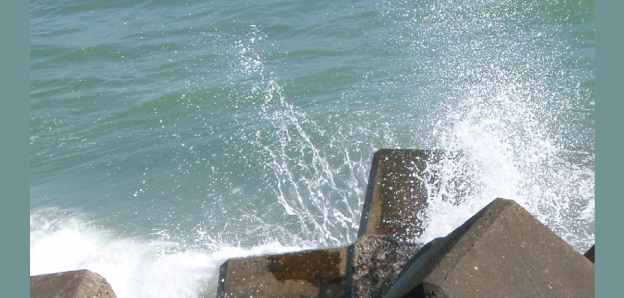Flip-through event explained!
Research Press Release | October 14, 2015
-
 An experimental back-light image showing transverse deformation of an ascending planar jet formed by wave impact on a vertical wall.
An experimental back-light image showing transverse deformation of an ascending planar jet formed by wave impact on a vertical wall. -
 A photograph of ligaments, sheets and sea sprays observed at wave impact on concrete armor blocks.
A photograph of ligaments, sheets and sea sprays observed at wave impact on concrete armor blocks.
| Press Release | ||
|---|---|---|
| Overview | When a steep breaking wave hits a vertical sea wall in shallow water, a rapidly ascending planar jet forms due to the wave impact on the wall and creates what is known as a ‘flip-through’ event. Previous studies focused on the impulsive pressures on the wall and on the velocity of the jet; however, in this study, we considered the formation and break-up of the jet itself. The mechanisms for the sequential surface deformations during the flip-through were identified through a stability analysis and a laboratory experiment, and help to explain the columnar structures often seen in photographs of violent wave impacts on harbour walls. | |
| Inquiries |
Yasunori WATANABE, Associate Professor, Coastal & Offshore Engineering, Division of Field Engineering for the Environment, Graduate School of Engineering, Hokkaido University E-mail: yasunori[at]eng.hokudai.ac.jp |
|
| Publications |
Transverse instability of ascending planar jets formed by wave impacts on vertical walls. Proceedings of the Royal Society A (2015.10.14) |
|
